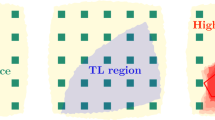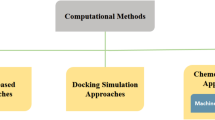Abstract
We present a method for generating alternative biochemical pathways between specified compounds. We systematically generated diverse alternatives to the nonoxidative stage of the pentose phosphate pathway, by first finding pathways between 5-carbon and 6-carbon skeletons. Each solution of the equations for the stoichiometric coefficients of skeleton-changing reactions defines a set of networks. Within each set we selected networks with modules; a module is a coupled set of reactions that occurs more than one in a network. The networks can be classified into at least 53 families in at least seven superfamilies, according to the number, the input-output relations, and the internal structure of their modules. We then assigned classes of enzymes to mediate transformations of carbon skeletons and modifications of functional groups. The ensemble of candidate networks was too large to allow complete determination of the optimal network. However, among the networks we studied the real pathway is especially favorable in several respects. It has few steps, uses no reducing or oxidizing compounds, requires only one ATP in one direction of flux, and does not depend on recurrent inputs.
Similar content being viewed by others
References
Atkinson, D. E. (1969). Limitation of metabolite concentrations and the conservation of solvent capacity in the living cell. Curr. Top. Cell. Regul. 1, 29–63.
Baskin, A. B., R. E. Reinke and J. E. Mittenthal (1992). Exploring the role of finiteness in the emergence of structure, in Principles of Organization in Organisms, J. Mittenthal and A. Baskin (Eds) Redwood City, CA: Addison-Wesley, pp. 337–377.
Brown, G. C. (1991). Total cell protein concentration as an evolutionary constraint on the metabolic control distribution in cells. J. Theor. Biol. 153, 195–203.
de Duve, C. (1991). Blueprint for a Cell, Burlington, NC: Neil Patterson.
Happel, J., P. H. Sellers and M. Otarod (1990). Mechanistic study of chemical reaction systems. Ind. Eng. Chem. Res. 29, 1057–1064.
Hendrickson, J. B., D. J. Cram and G. S. Hammond (1970). Organic Chemistry, 3rd edn, New York: McGraw-Hill.
Jia, J., W. Huang, U. Schoerken, H. Sahm, G. A. Sprenger, Y. Lindqvist and G. Schneider (1996). Crystal structure of transaldolase B from Escherichia coli suggests a circular permutation of the alpha/beta barrel within the class I aldolase family. Structure 4, 715–724.
Kirkwood, T. B. L., R. F. Rosenberger and D. J. Galas (1986). Accuracy in Molecular Processes, New York: Chapman and Hall.
Mavrovouniotis, M. L., G. Stephanopoulos and G. Stephanopoulos (1990). Computer-aided synthesis of biochemical pathways. Biotech. Bioeng. 36, 1119–1132.
Meléndez-Hevia, E. (1990). The game of the pentose phosphate cycle: a mathematical approach to study the optimization in design of metabolic pathways during evolution. Biomed. Biochim. Acta 49, 903–916.
Meléndez-Hevia, E. and N. V. Torres (1988). Economy of design in metabolic pathways: further remarks on the game of the pentose phosphate cycle. J. Theor. Biol. 132, 97–111.
Meléndez-Hevia, E., T. G. Waddell and F. Montero (1994). Optimization of metabolism: the evolution of metabolic pathways toward simplicity through the game of the pentose phosphate cycle. J. Theor. Biol. 166, 201–220.
Mittenthal, J. E., B. Clarke and M. Levinthal (1993). Designing bacteria, in Thinking About Biology, W. D. Stein and F. Varela (Eds), Reading, MA: Addison-Wesley.
Nuño, J. C., I. Sánchez-Valdenebro, C. Pérez-Iratxeta and E. Meléndez-Hevia (1997). Network organization of cell metabolism: monosaccharide interconversion. Biochem. J. 324, 103–111.
Rawn, J. D. (1989). Biochemistry, Burlington, NC: Neil Patterson.
Seressiotis, A. and J. E. Bailey (1988). MPS: an artificially intelligent software system for the analysis and synthesis of metabolic pathways. Biotechnol. Bioeng. 31, 587–602.
Wood, T. (1985). The Pentose Phosphate Pathway, Orlando, FL: Academic.
Author information
Authors and Affiliations
Rights and permissions
About this article
Cite this article
Mittenthal, J.E., Yuan, A., Clarke, B. et al. Designing metabolism: Alternative connectivities for the pentose phosphate pathway. Bull. Math. Biol. 60, 815–856 (1998). https://doi.org/10.1006/bulm.1997.0043
Received:
Accepted:
Issue Date:
DOI: https://doi.org/10.1006/bulm.1997.0043




